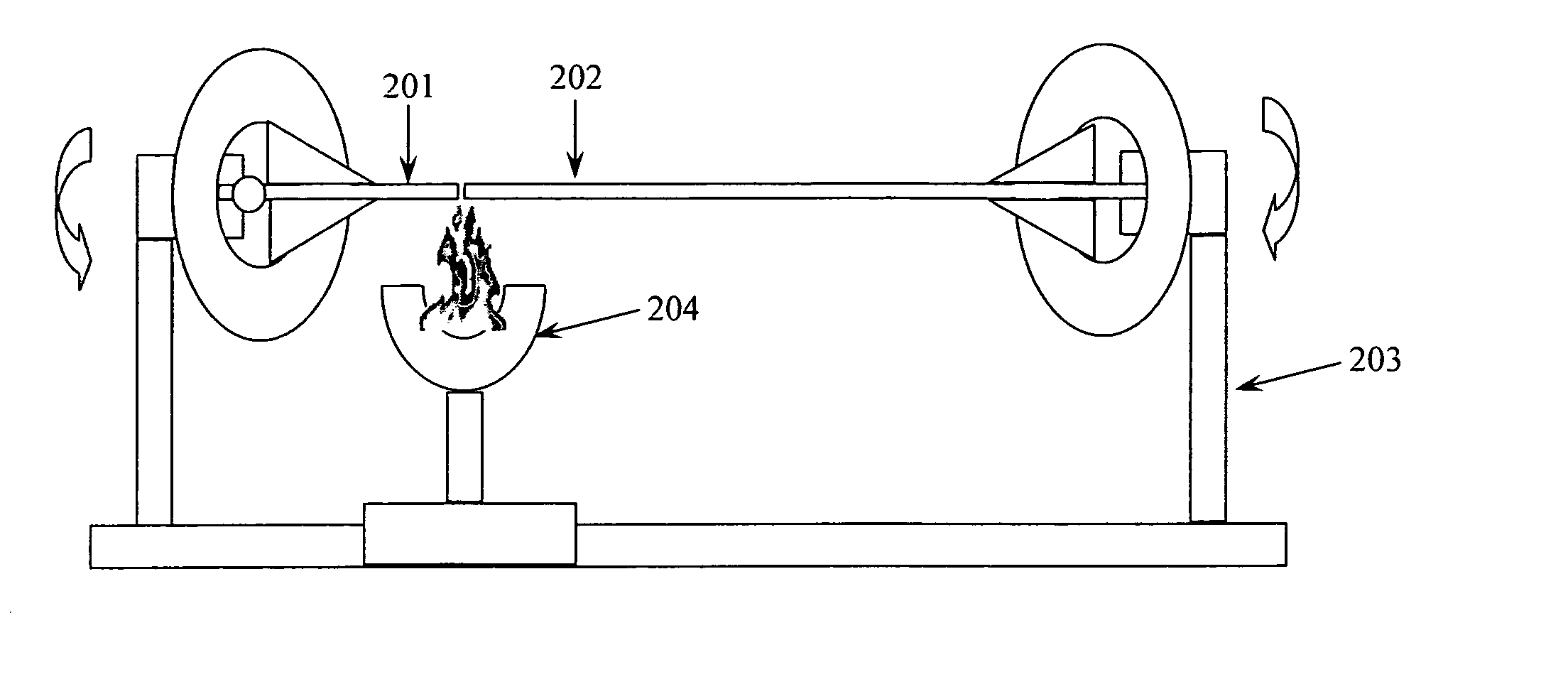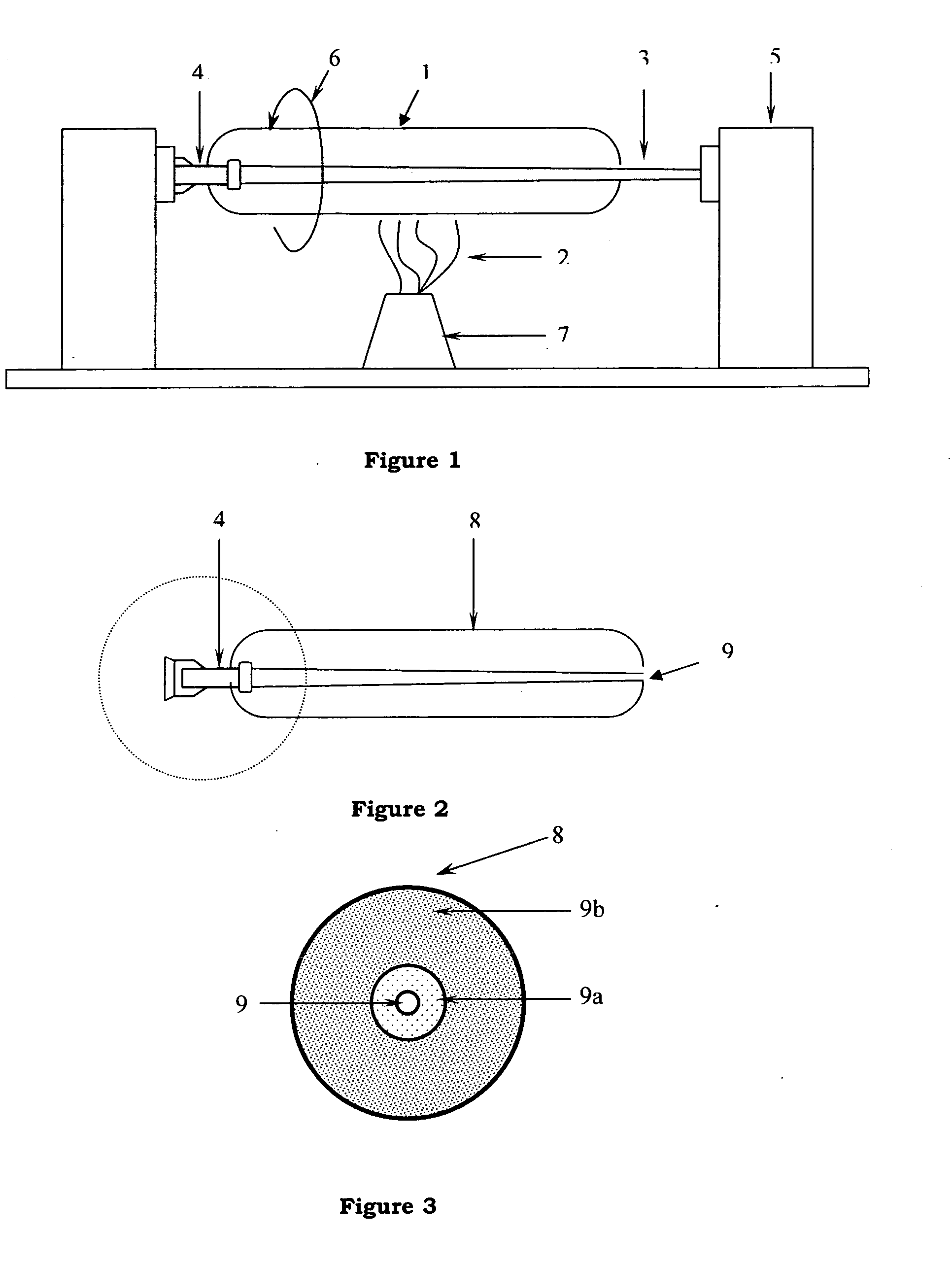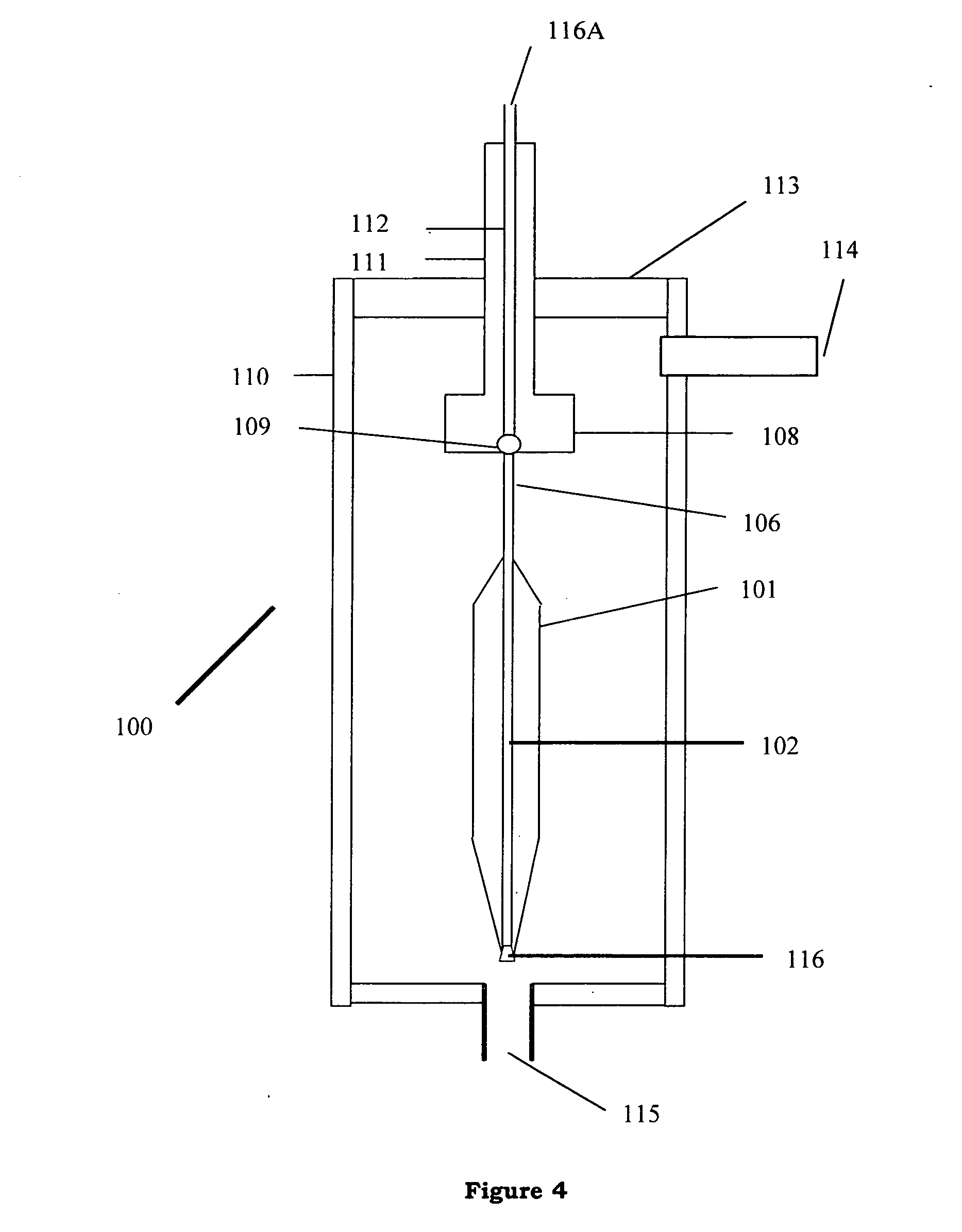Method for preparation of core rod assembly for overcladding, and perform and fiber produced from such core rod assembly
a core rod and overcladding technology, which is applied in the direction of cladded optical fibres, glass making apparatus, instruments, etc., can solve the problems of optical fiber breakage, disadvantages and limitations, and the following drawbacks of known heat treatment process steps, so as to reduce physical defects
- Summary
- Abstract
- Description
- Claims
- Application Information
AI Technical Summary
Benefits of technology
Problems solved by technology
Method used
Image
Examples
Embodiment Construction
[0076] Accordingly, the present invention relates to a method for preparation of core rod assembly suitable for overcladding comprising the steps of: [0077] a) preparing core rod having reduced diameter; [0078] b) fixing glass rods at each of the opposite ends of the core rod having reduced diameter; characterized in that [0079] c) the core rod with fixed glass rods at its opposite ends obtained in above process step-b) is fire polished in a controlled manner and two step process to produce core rod assembly suitable for overcladding, wherein first step is hard fire polish and second step is soft fire polish.
[0080] In accordance with one of the preferred embodiments of the present invention, the overcladding step is performed on the core rod assembly produced in above process step-c) to produce a core rod having overclad referred as soot preform comprising soot porous body having core rod.
[0081] In accordance with another preferred embodiment of the present invention, the soot pre...
PUM
| Property | Measurement | Unit |
|---|---|---|
| temperature | aaaaa | aaaaa |
| temperature | aaaaa | aaaaa |
| temperature | aaaaa | aaaaa |
Abstract
Description
Claims
Application Information
 Login to View More
Login to View More - R&D
- Intellectual Property
- Life Sciences
- Materials
- Tech Scout
- Unparalleled Data Quality
- Higher Quality Content
- 60% Fewer Hallucinations
Browse by: Latest US Patents, China's latest patents, Technical Efficacy Thesaurus, Application Domain, Technology Topic, Popular Technical Reports.
© 2025 PatSnap. All rights reserved.Legal|Privacy policy|Modern Slavery Act Transparency Statement|Sitemap|About US| Contact US: help@patsnap.com



